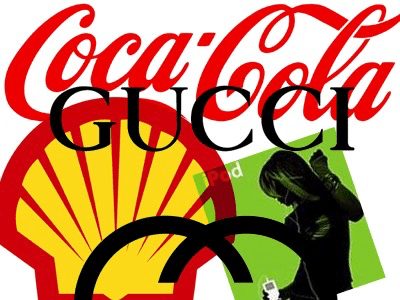What is Nominative Use?
What is nominative use? When most people need to blow their nose they will ask for a Kleenex. Most people do not realize that what they are actually asking for is a certain brand of face tissue. However, many people equate Kleenex with all face tissue regardless of the brand. This can also be true when people refer to pull-ups, which are a specific brand of diapers for babies. Many people don’t realize how much trademarks are a part of their daily lives. Trademarks are very important to consumers because they help identify the origin of a product.
The trademarks protect consumers from being confused about what they are actually buying because each mark must be unique different from an existing mark. However, sometimes a trademark can be used to advertise or refer to an unaffiliated good or service. This kind of use is called nominative use and may not be considered trademark infringement. The doctrine of nominative use creates a limit on how much exclusive control trademark owners have over their trademarks. For example, the actual Kleenex brand may not be able to stop a company named “Baby Soft” from advertising that “Baby Soft Kleenex is ten times softer than any other brand” This type of use by Baby Soft of the trademark Kleenex would likely fall under nominative use.
Problems With Nominative Use
The problem with the doctrine of nominative use is that there is no universally recognized test or definition. Nominative use is not written into trademark law so it is different in each jurisdiction. It has only been developed through cases in the different circuit courts. Many times the circuits are aware of how the other circuits have ruled on an issue. Courts may try to rule consistent with other circuits but they are not required to do so. Generally, most intellectual property cases come from the Second and Ninth Circuits. The opinions of these courts can have a good amount of influence on other circuits in the country.
Disagreement Among the Courts
Recently the Second Circuit has caused a circuit split with its ruling on a case that further complicated the nominative use doctrine. A circuit split means that there is a disagreement on a certain issue between the different regional appeals courts. In this case, the Plaintiff, International Information Systems Security Certification Consortium, developed a certification process for Certified Information Systems Security Professionals. The company identified the certification with the mark CISSP. The defendant, Security University (SU), provided an information security training for people to become certified. SU was allowed to use the mark to describe certain classes and instructors that prepared students to take the CISSP. However, the Plaintiff claims that the use of “Master CISSP” in certain SU advertisements should not be allowed. The Plaintiff claiming that it indicates that there is a higher level of certification.
In this case, the district court granted summary judgment in favor of the defendant, but the Second Circuit Court of Appeals reversed this judgment. The Second Circuit rejected the other circuits approaches to analyzing a nominative use with a separate test. Instead, the court held that even cases involving nominative use, should be analyzed using the likelihood of confusion test. The Second Circuit reasoned that allowing the affirmative defense of nominative use is giving the defendant too much liberty to infringe on the trademarks of others. The opinion for this case can be found on Find Law.
Effects of this Decision
Whenever a circuit split occurs inconsistency is created throughout the country. This means that depending on the region in which a case is decided there can be drastically different results compared to other regions. For example, in other circuits if the use of another’s trademark causes the consumer to be confused, nominative use could be a defense that allows the defendant to continue the use of the mark. But, in the Second Circuit nominative use is no defense and the defendant would not be able to continue the use of the mark.
Circuit splits can make it difficult to understand a particular doctrine. Because it is not written in the law the split makes it even more difficult to define the doctrine. This decision may require the Supreme Court to take a case involving nominative use in order to unify the circuits. For business owners, this decision makes it necessary to be more careful when using other company’s trademarks and possibly avoid the use altogether. It may be possible nominative use will not be an affirmative defense, thus creating liability for trademark infringement.
Nominative use can be difficult to understand. It is always best to consult with an attorney to avoid liability for trademark infringement. If you believe someone has infringed on your trademark or you have questions about nominative use in your state please contact Revision Legal’s team of experienced internet attorneys through the form on this page or call 855-473-8474.
Image credit to flickr user Edgeworks Limited
